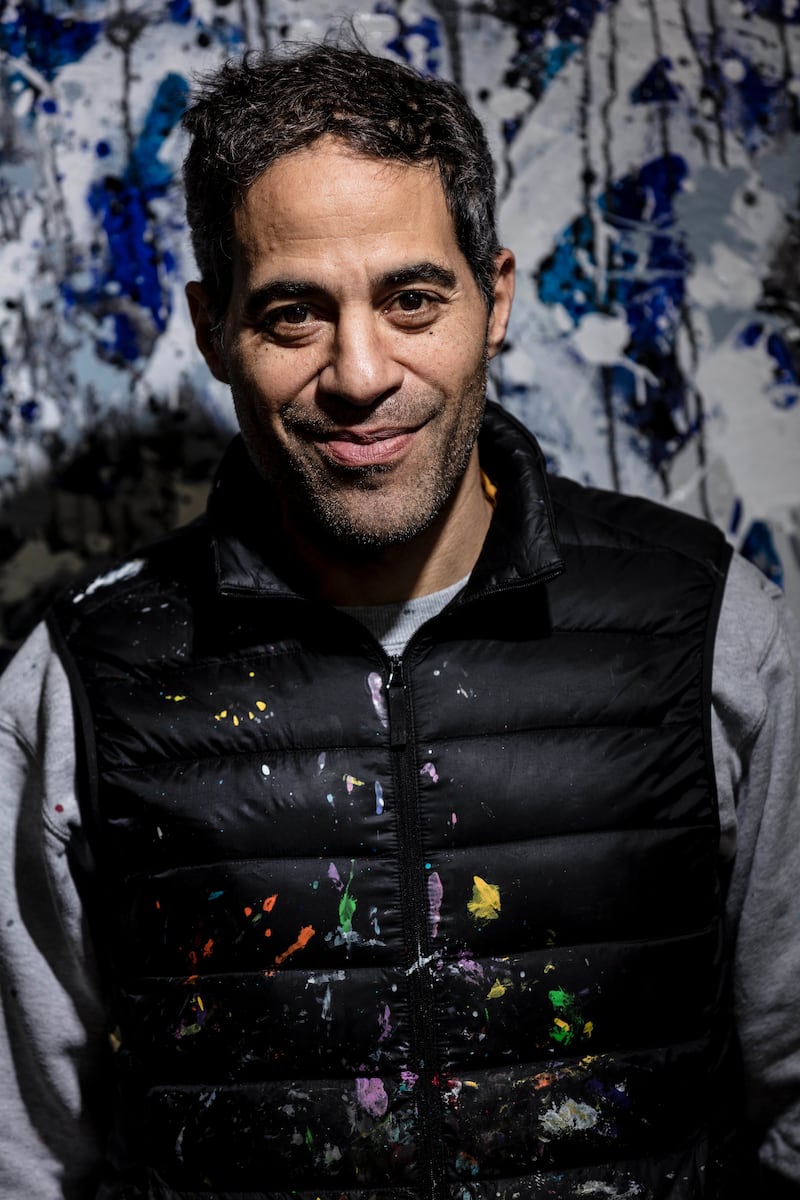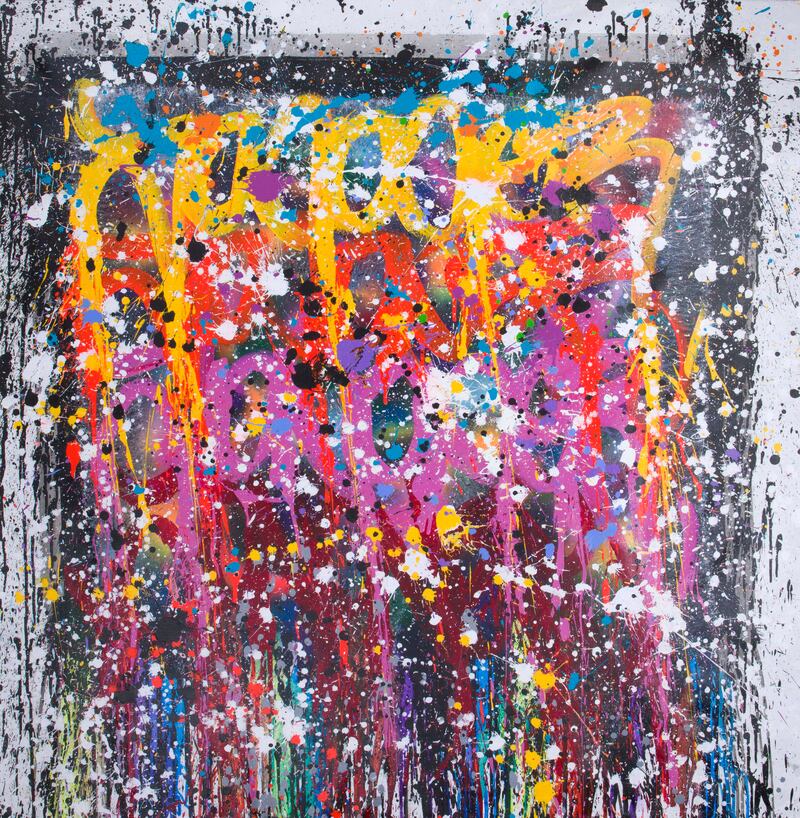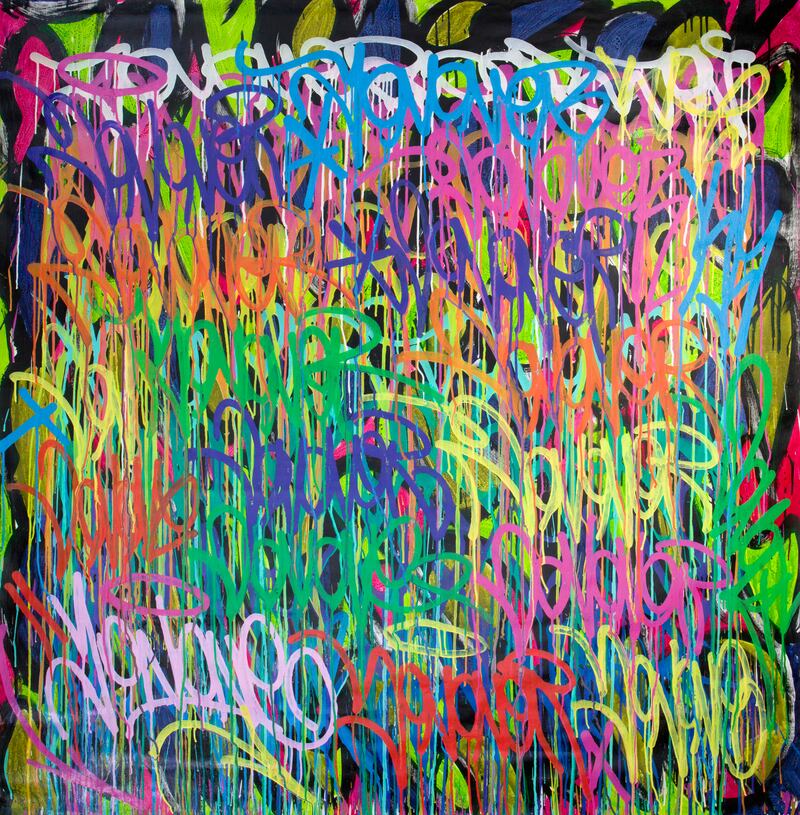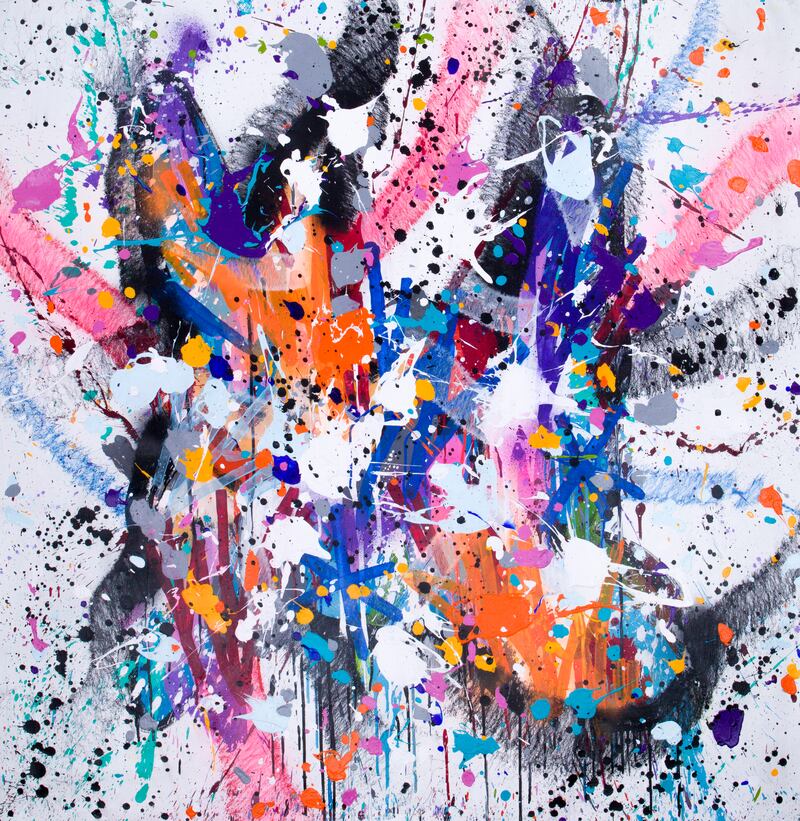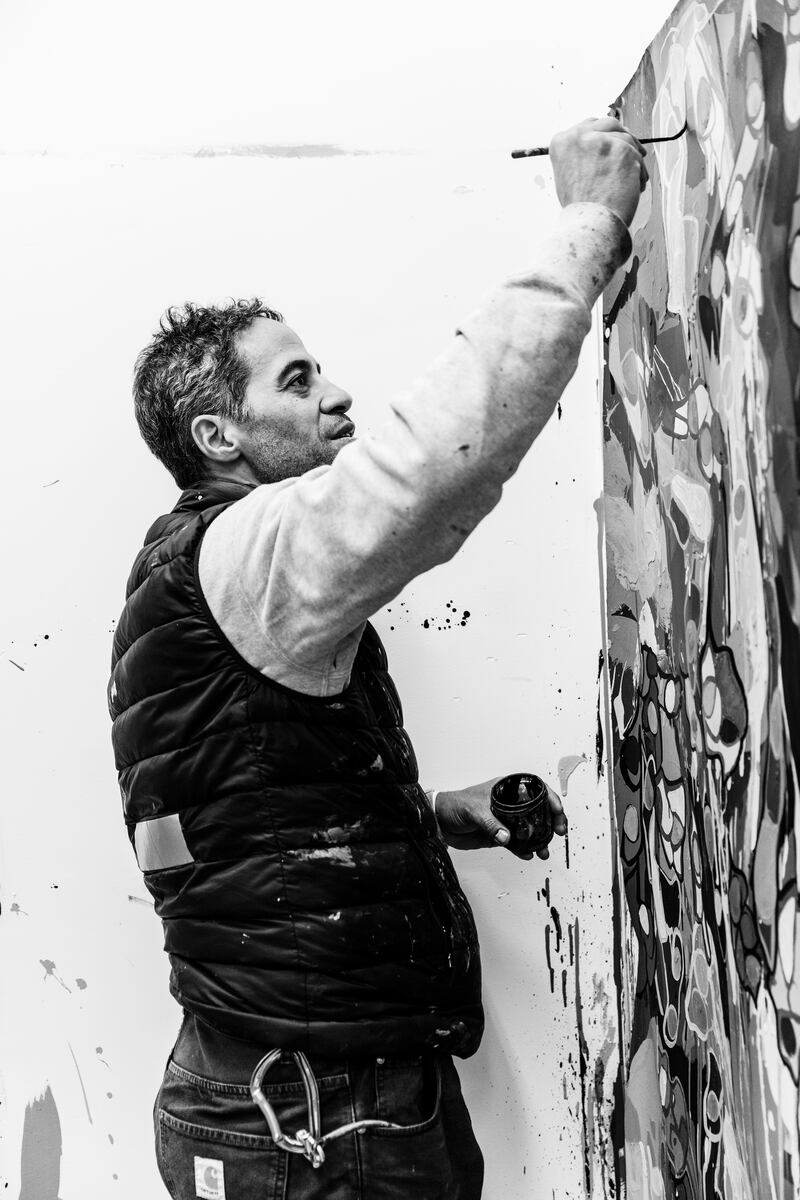The smell of fresh paint fills up the room in eL Seed Studio at Alserkal Avenue in Dubai. On the floor, clad in lightly splattered clothes and hovering over a freshly painted canvas, is JonOne, the French-American abstract expressionist artist.
Making his debut in the Gulf region, JonOne, real name John Andrew Perello, is presenting new works at Jossa by Alserkal, in collaboration with ArtTime Gallery, for the exhibition The Way of Colours, which runs from November 26 to December 9.
This is one of the graffiti artist's first shows in the Mena region, having only exhibited in Morocco before. It is also his first time visiting the UAE.
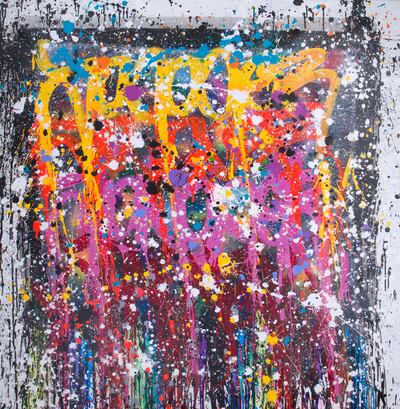
With brush in hand and knees squelching on protective bubble wrap underneath, he tells The National about his first impressions of Dubai. “My time here has been incredible. Each trip I make is enriching and this one especially so because I’m getting a different vision of the Middle East than I've ever had before. I see the richness more than ever, especially the diversity. There are so many different shades and cultures.”
For The Way of Colours, JonOne has created works that feel inspired by the city, emphasising calligraphic shapes to relate more to a Dubai audience. This is his usual strategy – creating works that are directly influenced by the surroundings and space he is entering.
“I see Dubai as a very energetic city," he says. "It’s like a melting pot of the future. I think my art really relates to that concept of what’s going on here and I hope that people can appreciate my approach to my calligraphy and be open to this form of language I’ve developed over the years along with my abstractions and colours.”
Who is JonOne?
JonOne, 57, was born in 1963 in Harlem, New York City. He began his career doing graffiti, tagging his name on streets, walls and trains. There, he melded into the street art scene, mingling with the likes of Andy Warhol and Jean Michel Basquiat and forming collectives.
“Graffiti was my school," he says. "People went to all kinds of different art schools, but I think the best school, my school, was the streets.
“In the 1980s, it was the best education anybody could ever have.”
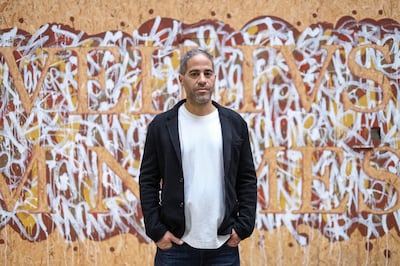
In 1987, upon invitation from his friend Bando, JonOne relocated to Paris, where he now lives. This time also marked a transition for the artist towards the canvas; alongside a few artist friends, he began working as a painter on canvas in a workshop at the Hospital Ephemeral, a hospital building turned artists’ squatting site in Paris’s 18th arrondissement.
What sets JonOne’s work apart is its dynamism, the movement of his brushstrokes, shapes and colours reflecting the frenetic energy of cities, which are places themselves characterised by motion, transience and a vibrant kind of chaos.
It makes sense to put his work into conversation with local artist eL Seed, whose ouevre and "calligraffiti" style JonOne greatly admires.
“Dubai has developed a lot of exterior image with its tall buildings and big architectural scene. But the art scene is still to be created. It’s not too big. There are major artists like eL Seed but things operate generally on a more corporate level. This is where places like ArtTime Gallery can bridge that gap.”
What does it mean for an artist raised on graffiti and street art to be coming to a city where spontaneous public art is discouraged? While public artworks and installations do get erected here, generally this happens via the work of institutions or other corporate bodies. JonOne says every emerging artist has to work, create and learn within their specific moment, social setting and the parameters those things offer.
“I’ve never been too concerned about the legality of things. I’m more concerned about the necessity of art not just being for an elite class or educated class. Art should be public for people to see. Different types of people – rich, poor, coming from various backgrounds, those who don’t have the opportunity to go to museums and art openings – they need it, too.
"So what better way to spread art than through the streets?
"I’ve been lucky enough through my art to survive as an artist and show my artwork in both the streets and galleries. I've been blessed, from the '80s to now, to still be here and be appreciated.”
